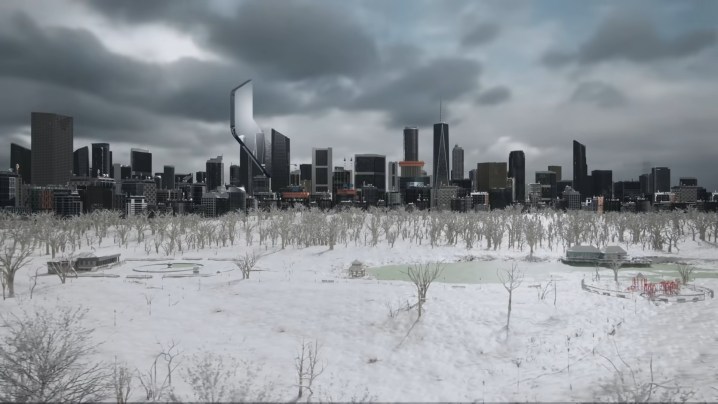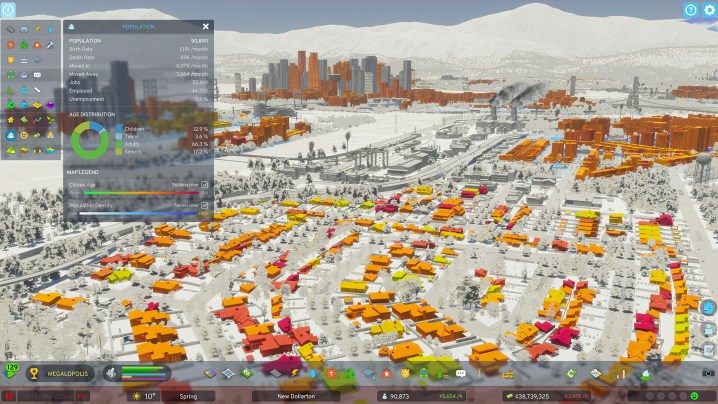The city-building genre has served a niche audience for the decades since the original Sim City popularized the idea of allowing players to design and manage their own little utopias. With that original franchise on ice, it fell to a newcomer, Cities: Skylines, to take up the mantle as the major player in the genre, and it managed to be a well-received replacement. That title got tons of support from the developers and community, but it finally came time for a sequel to freshen things up. Cities: Skylines II is building on the same foundation as city builders of the past, but it also brings in new features and mechanics that even seasoned city planners will need to wrap their heads around. Whether this is your first time raising a city from scratch or you’ve poured hundreds of hours into urban design, these are the essential tips and tricks you need to know when starting out in Cities: Skylines II.
Picking your plot

The first major choice you will need to make in Cities: Skylines II is where you want to actually go about building your dream society. At launch, the game comes with six maps to pick between, but this decision carries more weight than just aesthetic differences. Yes, each map has its own look that will determine how your buildings, homes, and even vehicles look, but there are deeper mechanical changes you want to plan for.
First are the terrain and resources of a map. The terrain of a map will naturally limit and influence the ways you can and cannot expand and grow your city, but it also has a massive impact on your street and transportation design. Maps in Cities: Skylines II are about five times larger than they were in the first game, but how much of that space you can freely build on will vary depending on the map. Along with the general terrain, each map will have different resources in varying amounts. Depending on what type of energy is most plentiful on a map, and in what locations, should be accounted for beforehand to properly zone and segment your different districts.
Finally, each map is meant to represent a different part of the world that experiences unique climates. Again, sn0w and sun are not just for show here. A map’s latitude will mean days are longer or shorter, and whether the weather is more or less extreme. What this means for you as a city planner is that your population’s behavior will be different depending on these factors. On top of that, if you are in an area prone to inclement weather, you need to have extra preparations in place for increased energy usage and more maintenance services for when the infrastructure goes down. Note the seasonal, continental, and polar climates of each map before making your choice.
Manage your early budget

As much as you may want to get right to the “good” stuff and start building up giant skyscrapers, Cities: Skylines II requires you to take it slow each and every time you start a new city. This is especially important if you’re new to the genre. Your starting budget may seem generous, but it will start draining faster than you might think. Initially stick to establishing a functional residential area, complete with smaller-sized homes and enough power, roads, and other utilities, to keep your monthly costs low before gradually taking on bigger zones with larger buildings as you generate profits.
For newcomers especially, remember to pause frequently in the beginning. Before you have any income flowing in, time passing is just a drain on your budget, so don’t waste it planning things out in real time when you can stop the clock and make a plan. This is especially important once you have citizens, but haven’t fully established services like trash removal and running water.
Milestones and Development Points
Cities: SkylinesII uses a Milestone and Development system to provide you with gradual upgrades and new features as your city grows. There are 20 Milestones to complete before you’ve maxed out and reached the highest level of city that you unlock by earning XP. You don’t have to go out of your way to earn or spend XP, just keep building, upgrading, and expanding and it will come naturally. As you hit Milestone levels, you will get Development Points that you want to pay far more attention to.
Development Points are spent on skill trees in the Development tab of your menu. There are almost a dozen tabs here you can spend these points on, including new roads, tourist attractions, upgraded education, emergency services, parks, and more. What category you will want to invest in depends on where you set your city and what your needs are, but sitting on these points will hold you back from growing at the rate you should.
Don’t overreach early and plan ahead

Going hand in hand with managing your early budget is creating a plan early and sticking to it as much as possible. Zoning may seem like the best way to lay out your future metropolis, but you need to resist that urge. Go ahead and plan out your road and district network, but don’t designate any zones for specific purposes until you know that’s what you need. Being a simulation game, you can never be 100% sure what your budding city will need as it gets off the ground. If you zone out too much space for one thing, but end up needing another first, then you not only have wasted space, but will have an overall less efficient city.
Always check your current city needs in the City Information tab. This will tell you all the places where your city is lacking and what zones should be prioritized first.
Don’t upgrade until needed
Finally, don’t be too eager to upgrade your existing buildings as soon as you can. These might seem like great investments, especially for your service buildings, but unless you’re going to immediately take advantage of that upgrade, it is a massive money pit. There’s the initial upgrade cost, of course, but upgrading a building also increases its monthly costs as well, which can easily bring you into the negative if you’re not getting value out of it. You also can’t undo upgrading a building, so this is an early mistake that could spiral into your eventual collapse if you’re not careful.
Editors' Recommendations
- Cities: Skylines 2 devs offer DLC refunds as console ports get delayed
- The best Palworld tips and tricks for beginners
- The best development nodes to unlock in Cities Skylines 2
- Cities: Skylines 2: release date, trailers, gameplay, and more
- Baldur’s Gate 3: tips and tricks for beginners




